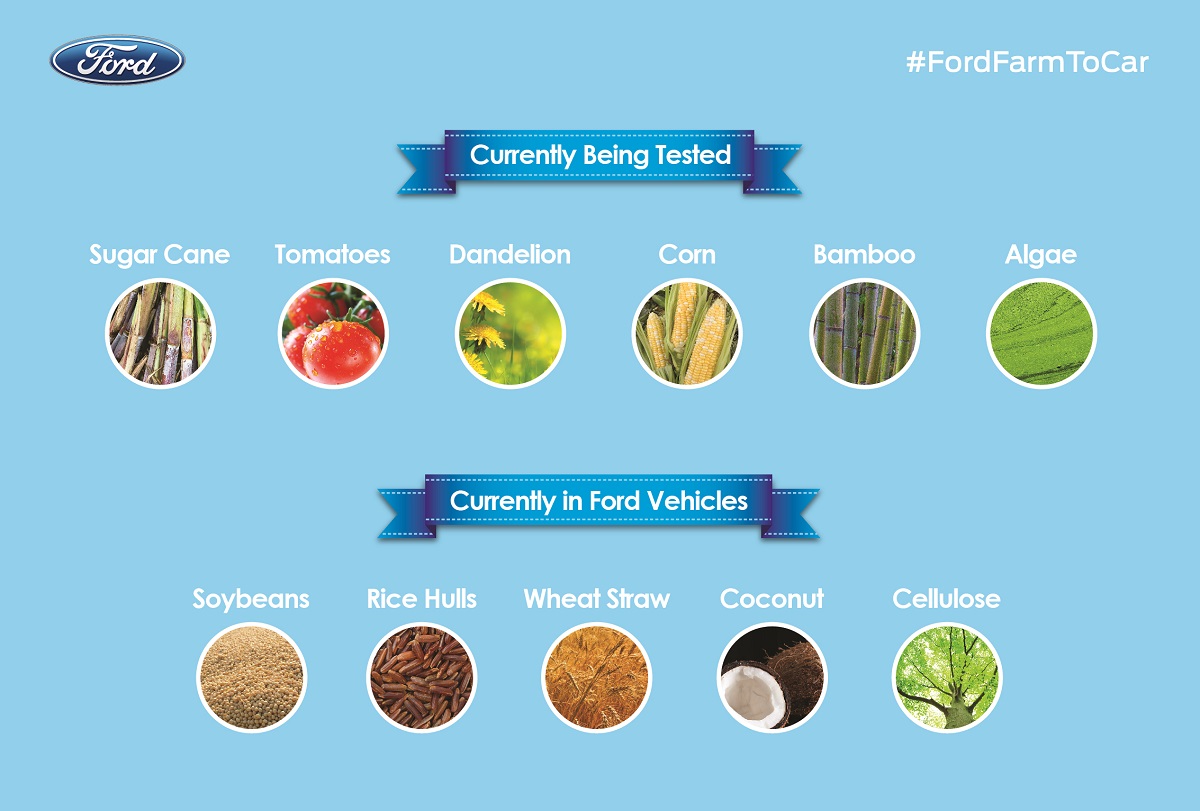
From envisioning and developing one of the first automobile production lines, to being the first producer of flathead V8 engines, the Ford Motor Company has long been at the forefront of automotive innovation. Now, Ford can claim another first. The company has announced a project aimed at producing auto parts made from captured greenhouse gases.
Ford has been pushing the boundaries of sustainability, and this is just another example of the company’s commitment to using renewable, biomaterials on the production line.
Using the captured carbon dioxide, Ford is experimenting with the production of foams and plastics used in seats, cabin materials and even engine components, and they’re the first automotive manufacturer to test this unique approach. The initiative, if it makes it to the production line, has the potential to help Ford reduce its petroleum use by nearly 600 million pounds each year, which is enough petroleum to fill 35,000 houses, Ford says.
Ford’s Long Commitment to Sustainable Materials
The Ford Motor Company’s founder Henry Ford was a champion of automotive innovation. For example, in the 1940s, Ford started experimenting with agriculture-based materials, which lead to Ford developing a soybean-based vehicle built in 1941. Plus, Ford’s Dearborn, Michigan plant was one of the first in the world to produce fenders made of soybeans.
That history continues today. In recent years, Ford has been moving away from plastic and artificially produced materials. The main reason is cost. Plastics require a large amount of oil to produce, while products like soybean-based and carbon dioxide-produced biomaterials greatly reduce the petroleum footprint and ultimately cost.

Yet, in the last two decades, Ford’s biomaterials research and production has truly taken off. Ford is leading the way in design and development of materials made from recycled or sustainable products. For example, the majority of Ford vehicles feature cushions, seatbacks, and headrests which are produced with soy-based materials. Additionally, the coin cups in many Ford cars are made with recycled shredded paper money.
In 2016, Ford is also using coconut fibers in their truck liners, and recycled plastic bottles have been used to create fabrics for the 2016 F-150. The move to research and develop CO2-based plastics for their vehicles is just the latest step in Ford’s mission to create vehicles produced with sustainable materials.
How CO2 Is Used to Produce Vehicle Parts
To help jumpstart the CO2 research initiative, Ford partnered in 2013 with Novomer, a company that captures carbon dioxide produced in the manufacturing industry. The partnership will provide Ford’s research lab with an abundance of captured carbon dioxide to experiment with and refine their production of foams and plastics made from the world’s most abundant greenhouse gas.
The project is still in its early stages, but the results have been promising. Ford’s research lab has developed a process for transforming captured carbon dioxide into a dense, soft foam material, which could be used for cushions and seating, and they’re also experimenting with durable plastics for fabric and engine components.

Yet, there’s still experiments and research that needs to be conducted. Although Ford says that carbon dioxide-based materials won’t likely be used on the production line for five years, it’s still an exciting announcement and signals the future of automotive design sustainability.
At Ford Lincoln of Franklin, we’re excited about the news. Many of our customers are already interested in the sustainable features of our vehicles – from Ford’s fuel efficiency ratings, to their electric vehicles. If you’re interested in the sustainable features of the 2016 Ford line-up, just ask the sales team at our Franklin, TN dealership when you come for a visit.




